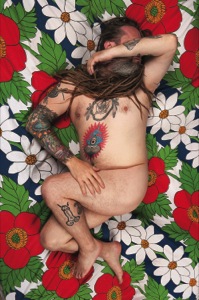
The lexicon used to describe artists and their creations can be abstruse, elitist and just plain ridiculous. Take, for example, this description of photographer David LaChapelle’s exhibit in Mexico City in 2009 entitled Delirium of Reason from Art Pulse Magazine: “The subjectivity manifest in LaChapelle’s discourse is an artistic response to the new ecology of typified identities based on notions of the end of time. It is a responsorial dynamic, from whence he ponders, reflects on and accepts, but never rejects; it is his direct response based on a most extreme fabulation of urban psychology and the “neo-tribal city mentality.”
As Mr. Mackey from South Park might say: M’kay.
The problem, one could conclude, isn’t that those at the top of the artistic food chain haven’t the slightest idea – or, perhaps, ability – to convey another’s artistic sensibility but that they have no desire to. Maybe, though, art endures because so many people respond on an emotional and intuitive basis to a work rather than through the pummeling intellectual exercise that is art criticism.
Luckily for us, Andrew Printer’s works, including his newest exhibit, At the End of The Day, appeal to a universal queer sensibility that lies almost exclusively on our historical understanding of the trajectory from perceived predatory pedophile to middle-class respectability (i.e. marriage, the military, etc.). And while we’ll leave you to judge the quality and relevance of his work, what we won’t do is tell you how to interpret it.

After all, when you can speak directly with the artist himself, it obviates the need for linguistic flourishes. Or, as Art Pulse Magazine might say, responsorial dynamics.
San Diego LGBT Weekly: How do you talk to someone about art that has no knowledge of it?
Andrew Printer: It depends on the context. I teach, so that is a particular setting. I tend not to talk to other folks about my art. We talk about other things. But to the point of your question: I am the first person in my family to go to college, let alone get an MFA. I still struggle with the distancing language used in conjunction with art. It seems exclusive. I also thought that images should speak for themselves. But, in grad school I realized that if I wanted my work to be taken seriously I needed to position it within some kind of context. My work has always been about queer identity. Therefore it is necessary to reference previous artists and images and histories, especially in terms of photography.
In the promotional announcement for your upcoming exhibition, the author writes, “The Sleepers series of photographs places numerous men onto the proverbial conjugal bed while stripping them of any trace of sexuality. Also presented are conventional portraits disrupted by an uncertain, often messy photogram effect that smudges identity, as it celebrates aberration.” It feels intimidating, as if I have to have had a certain life experience, that without, would otherwise make your works alien. Or, at least, not fully appreciated.
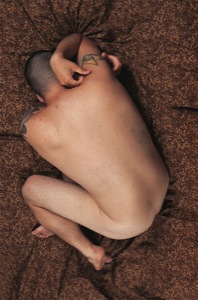
Ha, I am not sure I intended that to be intimidating. I don’t think it is. I mean there is no arty jargon or dense language. Plus, I am assuming that most people seeing the show will have a common experience with LGBT history, gay male history in particular; I am not too bothered if straight folks don’t get it.
So, in the text above I am basically saying Sleepers is about gay guys who once used beds for sex but now use beds like Lucy and Desi in the 1950s … one foot on the floor. This is another way of describing my observation of LGBT struggles that went from a kind of sexual liberation to straight people’s version of domesticity. My language regarding the other photos is basically saying: these photos are plain old portraits but I’ve made them messy on purpose. I could have said it that way I guess. The text is not that important for me really, but it seems to go with the territory.
You told the Advocate two years ago that, “Everything just seems weird to me, from the way people behave, to the way two words sit next to each other, to this color and that. I just follow a thought now and then and let it all sift together.” Weird how? And what role does this weirdness play in your creative process?
I don’t recall the context but I know that piece came out soon after I finished a series of deliberately absurd photos titled Second Thoughts from Normal Heights. The series was my attempt to process the whole gay marriage thing. So, that Advocate conversation touched on how some of the more recent LGBT objectives are very alien to me. Having kids, joining the army and getting married have never been objectives and frankly I don’t know where they came from within our community. One minute it’s all about AIDS and the next we want to get married. So it seemed weird. But then I also have a strong and cynical sense of humor and my view of the world can come out in my images.
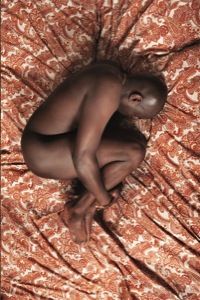
How do you know when a project is finished? Or are you like Ridley Scott, forever tweaking Blade Runner? Are you allowed do-overs in photography?
No, I never go back. I stop when I feel that I have explored something enough and don’t want to continue. Once an opportunity to exhibit the work happens I tend to see an end in sight.
Your site’s tagline states: “Color, Humor and a Whole Lot of Strange.” There’s that word again, or a variation of it: Weird. Strange. Do you see yourself as an outcast?
Not really. But then I am British and live in the U.S. I was born and raised in Hong Kong but that isn’t home either. I am gay and even though our community is becoming part of the fabric of society (assimilating) in amazing ways (in much of the West) this wasn’t always the case, and so I was outcast from my family for a while like most kids were. I am also a bit of a loner and tend to just watch how people are. I built my Web site recently and in doing so I recognized that my work does have a common thread running through it that involves color, humor and absurdity – hence the tagline.
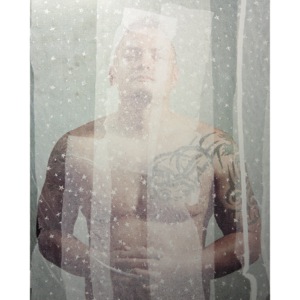
To be honest, after reading your bio and then finally seeing you and hearing you speak at performances from July 2010’s VAMP: Gay, Gayer, Gayest! at Whistle Stop , I was completely surprised. I mean, where’s your accent?
My accent comes and goes. I lived all over the world growing up and tend to pick up the accents around me quickly. I wish I still sounded English to be honest.
OK, so let’s talk about your latest exhibit: At the End of The Day. Better yet, let’s have you talk about it. It opens soon. Are you nervous?
Yes, mainly because I am printing the portraits using a technique that could cause my printer to break down at any minute. What do you say to the people who see “man’s inhumanity toward man” in a photograph of a dandelion? I am not sure what that means. Ultimately, people see what they want in any piece of art. I tell my students that no matter what their intentions when they make a photo and no matter how much attention is paid by them to have it communicate what they want to say, it is out of their hands once it is on the wall and someone is experiencing it.
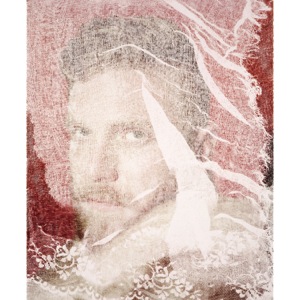
Exactly what it is you want to say with your photographs, and how do you actually get your photographs to do that?
Wow, that’s a big question. As I mentioned earlier my work has, for better or worse, been tied to the experience and the representation of a particular generation of gay men: pre AIDS, post AIDS, middle-age and assimilation. But it’s not meant to be overly-serious. As the text for this show says, my photos sit at the intersection of domestic life and queer lifestyle, camp and documentary, the tragic and the comic. It’s not just photography either. My work involves video, performance, installation, text and social practice but, primarily, photography … whatever feels right at the time.
What motivates you to continue taking pictures economically, politically, intellectually or emotionally?
Not money. And not really politics either. My experience in and of the world has always been my prime motivation. From the start I was driven to make some kind of object that described the oddness around me.
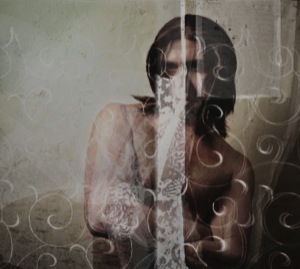
Do you have a favorite work(s)? If so, why those?
I don’t, and I am always stumped by that question. I seem to find something interesting in most everything. I do like things that sparkle though.
What is the one thing you wish you knew when you started taking photography?
In terms of photography, I wish I knew how to ask experts questions about how to use a camera. It was not an easy thing to learn how to use back in the time before digital and it has taken me a long time to know more and be comfortable with not knowing everything.
At the End of the Day, a new exhibit by Andrew Printer opens Feb. 15 and runs through March 15 at Space 4 Art, 325 15th Street in San Diego. An opening reception Friday will feature drag performances by Mario Marchiaro and a food truck provided by Red Oven Artisanal Pizza & Pasta. For more information, contact the gallery direct at 619-269-7230.
For more information, visit AndrewPrinter.com
Andrew Printer is the arts columnist for San Diego LGBT Weekly.











